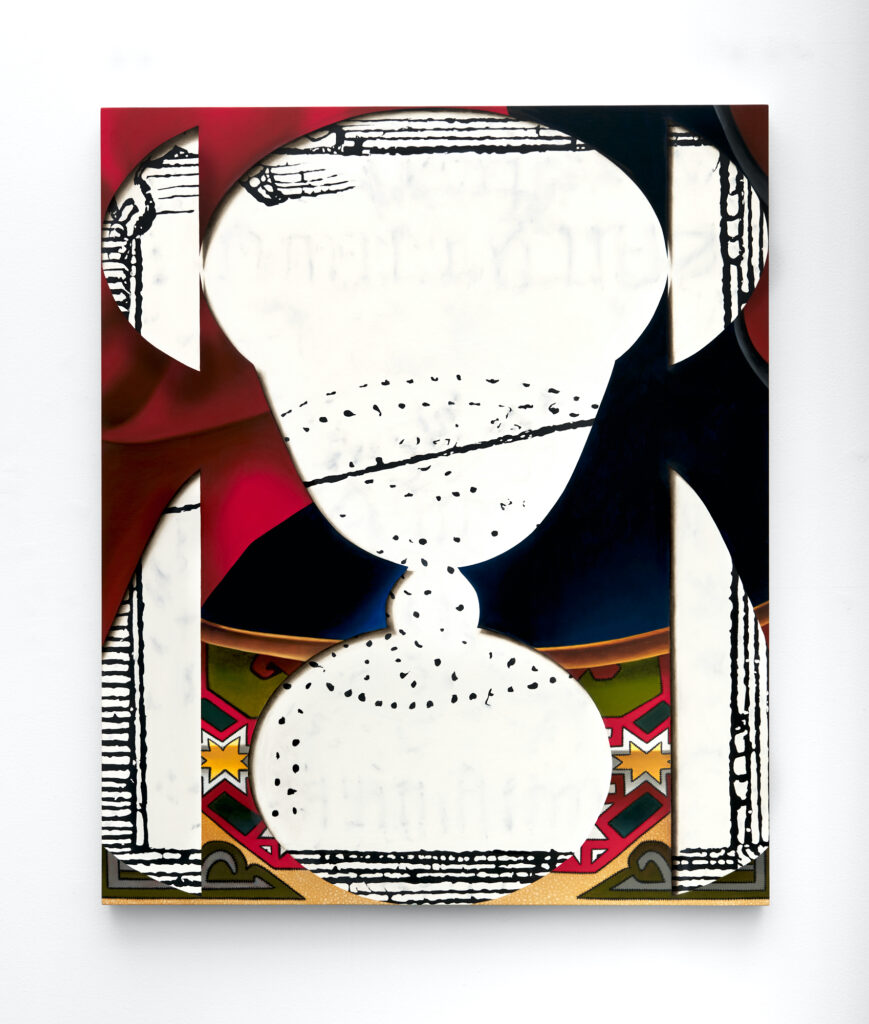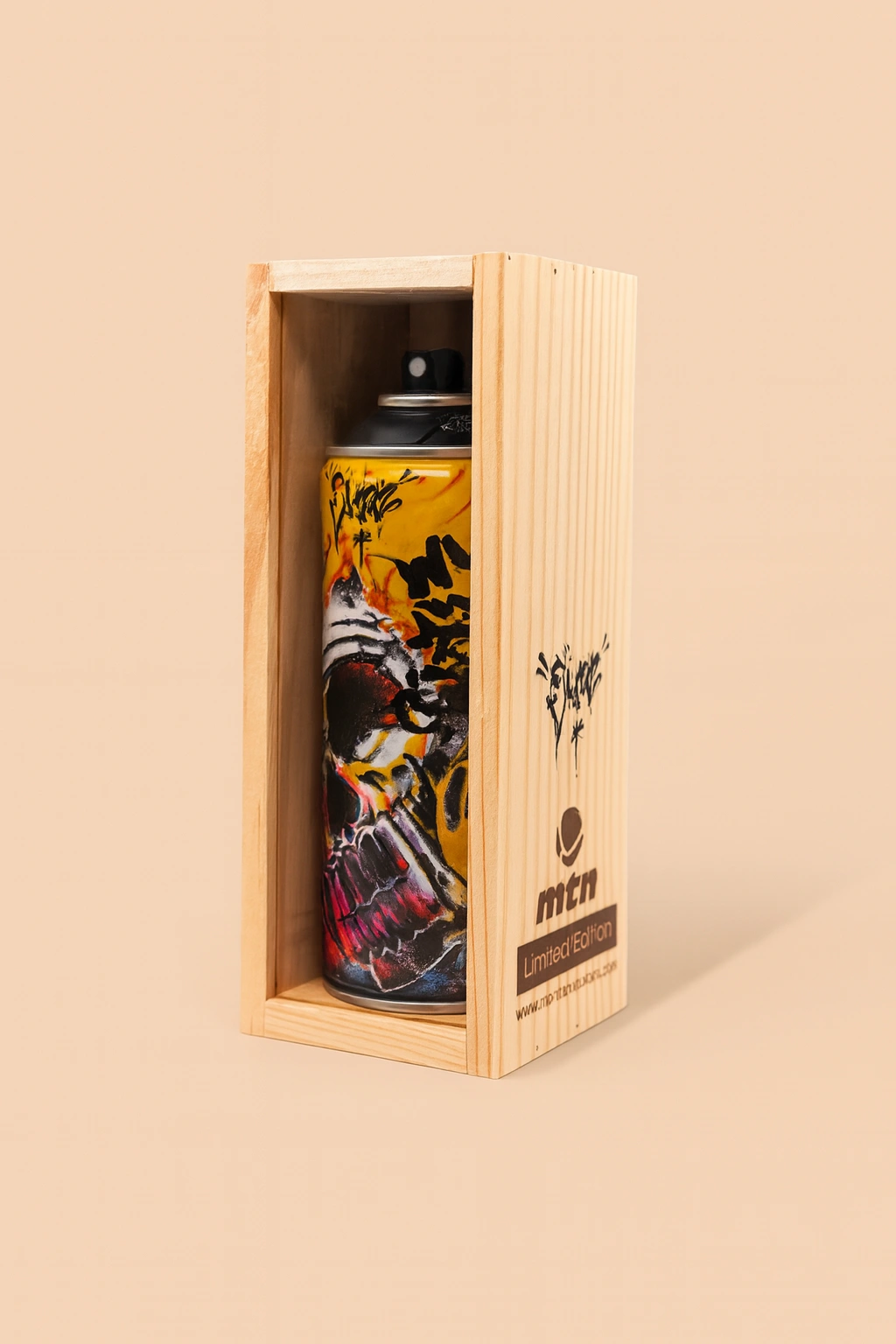Evan Halter’s “Chalice (After Albrecht Dürer and The Master of the Morrison Triptych)” is a thought-provoking artwork that bridges historical art traditions with contemporary perspectives. Executed in oil on a wood panel, the piece measures 36 x 30 inches, giving it a scale that draws viewers into its detailed, intricate imagery. This undated work pays homage to two distinct artistic influences: Albrecht Dürer, a master of the Northern Renaissance, and the anonymous “Master of the Morrison Triptych,” known for their complex religious iconography. Through this piece, Halter engages with themes of artistic legacy, symbolism, and the reinterpretation of historical styles.
Visual Analysis and Composition
Halter’s “Chalice” captures the viewer’s attention through its meticulously rendered forms and symbolic motifs. The artwork’s composition references the traditional triptych format, a staple of late medieval and early Renaissance devotional art, which often featured a central panel flanked by smaller, related scenes. While Halter’s work does not follow a strict triptych format, it evokes this structure through its balanced, harmonious arrangement of elements.
The central focus of “Chalice” is a highly detailed depiction of a chalice, a recurring symbol in Christian iconography representing the Eucharist and Christ’s sacrifice. Halter’s rendering of the chalice, influenced by Dürer’s precision and linearity, is both reverent and analytical. The chalice is depicted with a rich interplay of light and shadow, creating a sense of volume and weight that lends it an almost sculptural quality. Surrounding the chalice are additional elements inspired by Dürer’s style, including delicate botanical details and animal forms, which add layers of meaning and complexity to the scene.
Influences and Symbolism
Halter’s engagement with Dürer is evident in the meticulous attention to detail and the symbolic resonance of the depicted objects. Albrecht Dürer was known for his prints and paintings that combined a scientific approach to form with deeply spiritual themes. Similarly, Halter’s “Chalice” employs naturalistic depiction as a means to explore metaphysical and existential questions.
The Master of the Morrison Triptych, by contrast, is associated with the rich visual language of the late medieval period, characterized by elongated forms, vibrant color palettes, and intricate symbolic devices. Halter incorporates these aspects into “Chalice” through his use of iconography that references medieval devotional paintings. The choice of a wood panel as the substrate further connects the piece to its historical antecedents, recalling the traditional medium of altarpieces and religious panel paintings.
Symbolically, the chalice in Halter’s painting may suggest a range of interpretations, from the idea of spiritual nourishment to the transitory nature of material beauty. The surrounding flora and fauna, rendered in exquisite detail, echo the symbology found in both Dürer’s and the Master’s works, where animals often carry symbolic meanings related to virtue, vice, or the natural order.
Technique and Style
Halter’s use of oil on wood panel is significant, as it reflects a deliberate choice to engage with historical artistic techniques. Oil paint, known for its versatility and ability to produce rich, luminous surfaces, was a favored medium of both Dürer and his contemporaries. Halter’s application of oil, with its careful layering and glazing techniques, allows for a depth of color and texture that evokes the works of Old Masters.
The decision to use a wood panel as the support adds to the piece’s historical resonance. Wood panels were commonly used in the Northern Renaissance, where artists like Dürer would exploit the fine grain of the surface to achieve precise lines and intricate details. Halter’s choice of this medium is thus a conscious nod to the past, aligning his contemporary work with the long-standing traditions of Western painting.
Dialoguing with the Past
By invoking both Dürer and the Master of the Morrison Triptych, Halter positions “Chalice” within a broader discourse on artistic influence and the transmission of visual culture across centuries. The work functions as a dialogue between past and present, where Halter’s contemporary reinterpretation of historical forms challenges viewers to reconsider the relevance of these traditions in today’s world.
The title, “Chalice (After Albrecht Dürer and The Master of the Morrison Triptych)”, indicates that Halter is not merely copying or referencing these older works, but rather “following” them in the sense of responding to and building upon their legacies. This interpretive approach allows Halter to explore the ways in which visual language can be adapted and recontextualized, creating new meanings and resonances for contemporary audiences.
In this sense, Halter’s painting can be seen as a meditation on the nature of artistic authorship and originality. By acknowledging his debt to these historical artists, Halter situates himself within a lineage of creators who have engaged with and transformed the art of the past. His work raises questions about what it means to create “original” art in a world where all images are, in some sense, recombinations of pre-existing forms.
Impression
“Chalice” invites viewers to engage with it on multiple levels—visually, symbolically, and conceptually. The painting’s intricate detail and polished finish draw the viewer in, encouraging close observation and contemplation. At the same time, its rich symbolic content suggests deeper layers of meaning related to spirituality, tradition, and the role of art in shaping cultural values.
Halter’s ability to synthesize these elements into a cohesive whole speaks to his skill as both a painter and a thinker. The work’s ambiguity—its refusal to offer a single, clear interpretation—enhances its power, allowing it to resonate differently with each viewer. Some may see in the chalice a symbol of religious devotion, while others may interpret it as a comment on the persistence of beauty and meaning in a world that often seems devoid of both.
Ultimately, “Chalice (After Albrecht Dürer and The Master of the Morrison Triptych)” stands as a compelling example of how contemporary artists can engage with historical traditions in ways that are both respectful and innovative. Halter’s painting is not simply an homage to Dürer and the Master of the Morrison Triptych, but a reimagining of their visual languages, one that speaks to the complexities and contradictions of our own time.
No comments yet.








